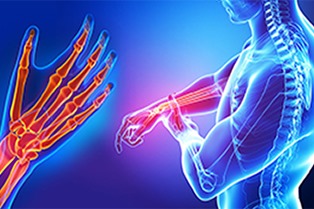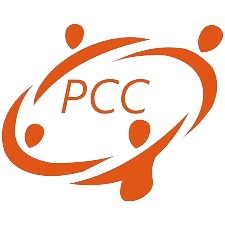Orthopedic department at our hospital is the best for treating any kind of Ortho related disorder. Our Orthopedics department is supervised by a vast experienced team of joint and bone specialists- Orthopedicians. They deal with Knee replacement surgeries, Traumatic Orthopedic surgeries, Hip arthroscopy and Shoulder replacement, along with arthroscopic surgeries or many other joint surgeries on a daily basis. We focus on providing the highest level of patient care with professional expertise of early mobilization and have taken orthopedic treatment to an altogether different level. Here we care for patients of all ages, from newborns to young adults to senior citizens requiring Total knee replacement, or any other surgeries. The joint implants are planned pre-operatively for perfect size and positioning as per the anatomy of the patient, thereby safeguarding the patients from any adverse effects.


ACL Reconstruction
ACL reconstruction is a surgical procedure aimed at replacing a torn anterior cruciate ligament (ACL), a significant ligament in the knee. The ACL is a band of tissue within the knee that connects one bone to another. ACL injuries typically happen during sports activities involving abrupt stops and rapid changes in direction, such as football, soccer, volleyball, and basketball.
Posterior cruciate ligament reconstruction is an operation to replace your torn Posterior Cruciate Ligament (PCL) and restore stability to your knee joint. The PCL is the largest ligament in the knee – twice as thick and strong as the ACL - and stops the shin bone from moving too far backwards.
Symptoms of ACL and PCL injuries:
- A loud pop or a "popping" sensation in the knee Severe pain and inability to continue activity
- Rapid swelling
- Loss of range of motion
- A feeling of instability or "giving way" with weight bearing

Meniscus Repair
A meniscus tear is a common knee injury. The meniscus is a rubbery, C-shaped disk that acts as a "shock absorber" between the thighbone and shinbone. It helps cushion and stabilize the knee joint. Each knee has two menisci—one on the outside of the knee and one on the inside.
A meniscus tear is often caused by a single acute injury—such as a sudden twist or quick turn during sports activity. Because the menisci weaken and wear thin over time, older people are more likely to experience a degenerative meniscus tear.
Symptoms of meniscus tear :-
- Popping Sensation
- Swelling or stiffness
- Pain, especially when twisting or rotating your knee
- Difficulty straightening your knee fully
- Feeling as though your knee is locked in place when you try to move it
- Feeling of your knee giving way

Multi Ligament Surgery
Multi ligament surgery is the surgical repair or reconstruction of two or more ligaments in the knee joint after injury.
A multi ligament injury involves damage to two or more ligaments in the knee and can occur after a rigorous blow or trauma to the knee of considerable force. Commonly other structures in the knee are also damaged such as; meniscus, tibia (shin bone), femur (thigh bone), patella (knee cap), costochondral cartilage (inner surface of knee joint) and surrounding soft tissues.
Symptoms :-
- Patients with multi-ligament knee injuries may experience pain
- Swelling
- limited range of motion
- injuries to nerves and arteries of the leg
- knee instability

Rotator Cuff Tear
A rotator cuff tear is a common cause of shoulder pain and disability among adults. A torn rotator cuff may weaken your shoulder. This means that many daily activities, like combing your hair or getting dressed, may become painful and difficult to do.
Symptoms :-
The most common symptoms of a rotator cuff tear include:
- Pain at rest and at night, particularly if lying on the affected shoulder
- Pain when lifting and lowering your arm or with specific movements
- Weakness when lifting or rotating your arm
- Crepitus, or a crackling sensation, when moving your shoulder in certain positions.
- Arthroscopic Rotator Cuff Repair is a minimally invasive procedure to reattach rotator cuff tendon tears.
- Surgeons operate on the shoulder using small incisions, and use a arthroscope and small instruments. The Rotator Cuff Repair (Arthroscopic) procedure typically leads to a faster recovery time with less inflammation, discomfort and scarring than an open approach.

Frozen Shoulder
Frozen shoulder, sometimes called adhesive capsulitis, is a condition that limits movement in shoulder joint. You usually have pain and stiffness that comes on gradually, gets worse, and then finally goes away.
Three stages of frozen shoulder:-
- Stage 1: Freezing : In the "freezing" stage, you slowly have more and more pain. As the pain worsens, your shoulder loses range of motion. Freezing typically lasts anywhere from 6 weeks to 9 months.
- Stage 2: Frozen : Painful symptoms may actually improve during this stage, but the stiffness remains. During the 4 to 6 months of the "frozen" stage, daily activities may be very difficult.
- Stage 3: Thawing : Shoulder motion slowly improves during the "thawing" stage. Complete return to normal or close to normal strength and motion typically takes anywhere from 6 months to 2 years.

WHAT IS SHOULDER DISLOCATION?
A dislocated shoulder is an injury in which the upper arm bone pops out of the cup-shaped socket that's part of the shoulder blade. The shoulder is the body's most flexible joint, which makes it more likely to dislocate.
Dislocated shoulder symptoms can include:- A visibly deformed or out-of-place shoulder
- Swelling or bruising
- Intense pain
- Inability to move the joint
What is Arthroscopic Bankart Repair?
The Arthroscopic Bankart Repair is an effective procedure to treat patients that have anterior shoulder instability. This is performed through 3 small holes (called portals). The Bankart Repair involves reattaching the detached labral-capsular complex to the glenoid using suture anchors. It is also possible to do a capsular shift (tightening of the lax capsule) at the same time. The advantage of the arthroscopic technique is its minimally invasive nature, which minimizes morbidity of surgery and hospital stay.

Hip Arthroscopy
Hip arthroscopy is a surgical procedure that allows doctors to view the hip joint without making a large incision (cut) through the skin and other soft tissues. Arthroscopy is used to diagnose and treat a wide range of hip problems. This procedure allows the surgeon to diagnose the cause of hip pain or other problems in your joint. Some hip conditions may also be treated arthroscopically. To perform arthroscopic hip surgery in these cases, the surgeon makes additional small incisions (usually one or two) to create access points for various arthroscopic needles, scalpels or other special surgical tools.
